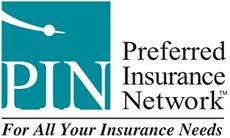As a policyholder, understanding key insurance terms is crucial for making informed decisions about your coverage. From deductibles to exclusions, each term plays a vital role in how your policy functions. Familiarizing yourself with these terms can empower you to navigate the complexities of insurance with confidence and clarity. By grasping the nuances of premiums, coverage limits, and the claims process, you can ensure you have the right protection in place. So, are you ready to unravel the mysteries behind these essential insurance terms and take control of your financial security?
Key Takeaways
- Deductible: Amount paid before coverage starts, impacts premium.
- Premium: Cost paid for insurance, varies by coverage and factors.
- Coverage: Protection against risks specified in policy.
- Limits: Maximum amount insurer pays for covered losses.
- Exclusions: Conditions not covered by insurance policy.
Policyholder
When it comes to understanding insurance, the term “policyholder” is key. As a policyholder, you’re the individual who purchases an insurance policy from an insurance company. By entering into a contractual agreement with the insurer, you agree to pay a premium in exchange for the coverage outlined in the policy.
As the policyholder, you have certain rights and responsibilities. It’s crucial to review your policy carefully to understand what’s covered, the limitations, and any exclusions. In the event of a claim, the policyholder is the one who submits the claim to the insurance company for evaluation.
Being a policyholder also means that you should keep your policy information up to date and inform your insurer of any changes that may affect your coverage. Understanding the terms and conditions of your policy as a policyholder is essential to ensure that you’re adequately protected in case of unforeseen events.
Deductible
Understanding the concept of a deductible is crucial in navigating your insurance policy. A deductible is the amount of money you’re responsible for paying out of pocket before your insurance coverage kicks in. For example, if you have a $500 deductible and file a claim for $2,000, you’d need to pay the first $500, and then your insurance would cover the remaining $1,500.
Deductibles can vary depending on the type of insurance policy you have. Typically, policies with lower deductibles tend to have higher premiums, while policies with higher deductibles often come with lower premiums. It’s important to choose a deductible that you can comfortably afford in case you need to make a claim.
Having a clear understanding of your deductible is essential for budgeting and planning your finances. Make sure to review your insurance policy carefully to know how your deductible works and what expenses you’ll be responsible for in the event of a claim.
Premium
To begin, the premium is the amount of money you pay to your insurance company in exchange for coverage. This payment is typically made on a monthly or annual basis, depending on your policy. The premium amount can vary based on factors such as the type of coverage you have, your deductible amount, your age, and your location. It is essential to pay your premium on time to ensure continuous coverage and avoid any lapses that could leave you unprotected in case of an incident.
| Factors Affecting Premiums | Description | Example |
|---|---|---|
| Type of Coverage | Comprehensive coverage may cost more than basic coverage | Comprehensive auto insurance vs. liability-only |
| Deductible Amount | Higher deductibles usually lead to lower premiums | $500 deductible vs. $1000 deductible |
| Personal Factors | Age, driving record, and location can impact premium rates | Young drivers vs. experienced drivers in urban areas |
Coverage
Coverage is the specific protection provided by your insurance policy. It outlines the risks and perils for which you’re insured. When you purchase an insurance policy, you’re essentially buying coverage for specific events or circumstances that could result in a financial loss.
For example, auto insurance coverage may protect you in case of an accident, while health insurance coverage could help with medical expenses.
Understanding the coverage offered by your policy is crucial. Different types of insurance provide coverage for different needs. Homeowners insurance, for instance, typically covers damage to your home caused by certain events like fire or theft.
Meanwhile, life insurance coverage offers financial protection to your beneficiaries in the event of your passing.
It’s important to review your policy to fully grasp the extent of your coverage. Make sure you’re aware of what’s included and excluded.
If you have any questions about your coverage, don’t hesitate to reach out to your insurance provider for clarification.
Limits
When it comes to insurance, knowing your policy’s limits is key. Policy limits refer to the maximum amount your insurance company will pay for covered losses. It’s crucial to understand these limits to ensure you have adequate coverage when you need it most.
For example, if your auto insurance policy has a liability limit of $50,000 per accident, that’s the most the insurer will pay for bodily injury or property damage resulting from a single incident.
Additionally, there are usually separate limits for different types of coverage within a policy. Understanding these limits can help you avoid unexpected out-of-pocket expenses.
For instance, a homeowners policy may have one limit for property damage and a different limit for personal liability claims. Knowing these limits can prevent financial surprises in the event of a claim.
Exclusions
Navigating the fine print of your insurance policy is essential, and one crucial aspect to be aware of is the exclusions. Exclusions are specific conditions or circumstances that are not covered by your insurance policy. It’s important to understand these exclusions to prevent any surprises when filing a claim.
| Covered Perils | Exclusions |
|---|---|
| Fire | Earthquake, Flood, Negligence |
| Theft | Mysterious Disappearance, Unlocked Vehicle |
| Water Damage | Gradual Water Damage, Sewer Backup |
| Personal Injury | Intentional Harm, Professional Activities |
| Natural Disasters | Acts of War, Nuclear Accidents |
Claim
To initiate a claim with your insurance provider, you must promptly notify them of the incident that requires coverage.
Once you’ve informed your insurer, they’ll guide you through the claims process. This typically involves filling out claim forms and providing any necessary documentation to support your claim, such as police reports or medical records.
After your claim is submitted, the insurance company will assess the information provided and determine the coverage and benefits applicable to your policy.
They may also conduct investigations or request additional information to validate the claim. Once your claim is approved, the insurer will arrange for the payment of benefits as outlined in your policy.
It is essential to be honest and accurate when filing a claim to ensure a smooth process and avoid any delays or potential issues.
Remember to keep records of all communication with your insurance company regarding the claim and ask questions if you need clarification on any aspect of the process.
Underwriting
Understanding underwriting is crucial when it comes to insurance. Underwriting is the process insurers use to evaluate the risk of insuring you. During underwriting, insurers assess various factors like your age, health status, occupation, and lifestyle to determine the likelihood of you filing a claim.
This evaluation helps insurers decide if they should provide you with coverage and at what premium. Insurers use underwriting to protect themselves from high-risk individuals who are more likely to cost them money in claims.
Conclusion
Now that you’re familiar with these key insurance terms, you can confidently navigate your coverage and make informed decisions. Remember to review your policy regularly, understand your deductibles and limits, and be aware of any exclusions. Knowing how the claims process works and the role of underwriting will help you manage your expectations and ensure you have the right protection in place. Stay informed and take control of your insurance coverage

